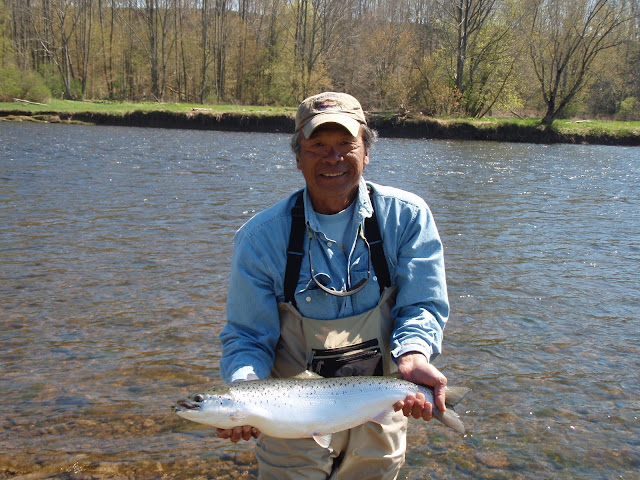By
Spider Rybaak
 |
| An average |
The
2012 Bassmasters Elite Series tournament wraps up on Oneida Lake this week,
August 23-26. And although I fished the place pretty hard in the early weeks of
the season--and the bass were abundant, cooperative and big--I figured it
wouldn’t hurt to go out and try my luck just before the tournament…to test the
waters, so to speak, and see what our visitors to Oswego County had in store.
So
I get in touch with my buddy Ray, a native of nearby Liverpool. Not only is he
a pretty decent fisherman and all around nice guy, he’s got a boat--and I
don’t--which makes him the perfect fishing buddy.
We
launched from his berth in Brewerton and headed out for open water. The weather
was fair, the southerly winds moderate. We started a few feet from the Onondaga
County bank and drifted toward Oswego County.
Half
way to Big Bay the perfect hit slams my black and white bucktail jig tipped
with a worm. I set the hook hard and I’m into a pretty respectable battle.
A
couple seconds later, I knew it wasn’t a walleye because it was fighting too
hard; and it couldn’t be a bass because it wasn’t fighting hard enough. I
figured it for a sheepshead; a northern pike, maybe a cat.
It
was neither. Instead, it was the bane of just about every bass enthusiast I
know: a chain pickerel. Packing a mouthful of razor sharp teeth, these guys are
notorious for biting through the line--biting-off, in Oneida Lake
speak--getting away, lure and all. Losing baits and having to tie new ones on
in the thick of competition is gonna make a lot of this weekend’s guests
grumpy, I thought.
Reaching
the weeds at the high side of the northern edge of the channel, I change to a
spinnerbait and draw a couple more monster pickerel to the side of the boat
where they look at me with pagan hatred in their eyes, but don’t hit. Sissies,
I think as I cast out again.
After
about a half hour of short strikes and some clumps of weeds, I switch over to a
6-inch YUM Dinger and pitch it into the holes and edges of weeds, emerging weed
ends, weed clusters, anything unusual that we approach.
A
nice largemouth of about 4 pounds nails it in a narrow channel between stands
of vegetation. Diving for bottom, he burrows into the weeds like a drill. But
he never has a chance. An old hand at bucketmouth tactics, I keep my favorite
Abu Garcia Revos loaded with 30-lb test UltracastFluorobraid topped off with
long stretches of 25-lb test Berkley’s Pro Spec Fluorocarbon leaders. A short,
forceful pull on the line and the bass, crowned in weeds, reluctantly comes to
the boat. I flip him in so quick he looks at me all surprised and stuff. After
taking the hero shot illustrating this blog post, I release it to give the guys
in the upcoming contest a chance at catching the happiness I just
experienced.
Large
bass have an intoxicating effect on me and I couldn’t stop whooping, hollering,
talking away. I should’ve, though, because right when I’m modestly bragging
about my prowess, I get another perfect hit, from a bass even larger than the
first, but set the hook too late. I feel the tension on the line and see him
jet out of the water like a green geyser with a big lump in the middle but my
line comes in empty.
A
few minutes later, I’m still carrying on, another hits and I lose him,
too.
All
this time Ray’s having a blast with sunfish and perch. The guy loves panfish
and was busy working on filling his freezer.
Before
long, the massive weed bed in Big Bay starts getting boring and we motor over
to the other side of the lake to start our drift anew. But the wind picks up
and the temperature changes noticeably, growing colder, and uncomfortable.
As
often happens on NY’s largest lake, the wind died down as unexpectedly as it
came up, things got comfortable, and we regained confidence. We felt pretty
good and thought we might catch another bass or two, maybe a walleye and
plugged away. But it seemed we couldn’t find another fish even if we were in a
submarine.
It
is my unprofessional opinion that Oneida Lake’s bass population is in great
shape for the upcoming Bassmasters Elite. Indeed, it might even be one for the
record books.










